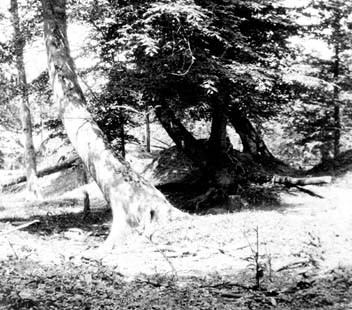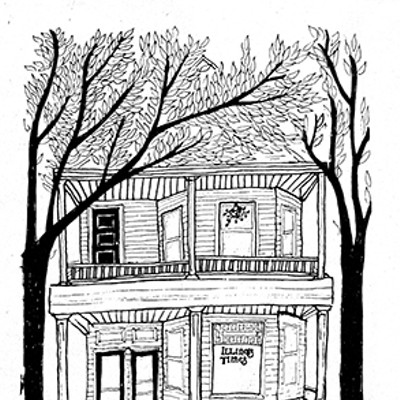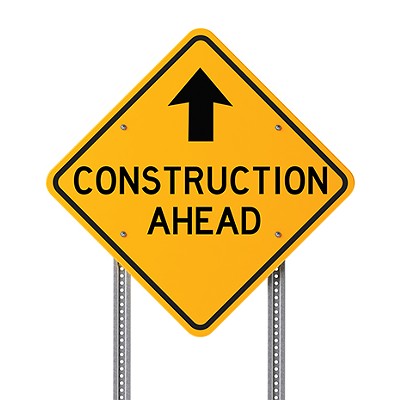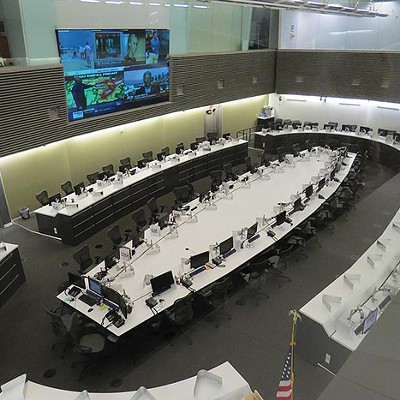
The foundations of Springfield institutions will crack and sway. Structures long thought impregnable will topple; a long-familiar landscape with be altered beyond recognition. No, it is not the conviction of Bill Cellini that might cause this calamity, but the major earthquake that is almost certain to strike Springfield and the rest of this part of the Midwest.
Illinois is not usually thought of as earthquake country. John McPhee, writing in In Suspect Terrain, described this part of the world as “the continent’s province of supreme tectonic calm.” True, there’s no mountain-building going on around here, unless one counts the molehills that preoccupy so much of our politicians and their press. Nonetheless, the rocks that lie buried beneath thousands of feet of subsidizable corn soil are in frantic motion in Midwestern terms. Hundreds of quakes have been recorded in Illinois since the Euro-Americans arrived with instruments capable of recording them. In April 2008, a small shift in the deep rock beneath the Wabash Valley that was felt in Georgia, Iowa and Michigan shook the ground in Springfield enough to wake slumbering bureaucrats from their well-deserved rest. That 5.2 magnitude earthquake was followed a few hours later by an aftershock measured at 4.6. That system of faults in the Wabash Valley known as the Wabash Valley Seismic Zone also was the source of the strongest earthquake to strike in the central U.S. since 1895 – a 5.3 tremor that happened in 1968.
A new report by the Mid-America Earthquake Center or MAE at the University of Illinois estimated the effects of “a major earthquake event” in the central U.S. in the form of a complete rupture of the entire New Madrid fault. Seven quakes of magnitude 6.0 to 7.7 occurred along that fault between December 1811 and February 1812 that rank as some of the largest in the Euro-America era; 10 of the aftershocks were more powerful earthquakes than any Illinois has felt since then; there were perhaps 100 aftershocks as strong as the one from April 2008.
Such shaking could damage nearly 715,000 buildings, crumble levees, bring down bridges, snap water and gas mains and leave 2.6 million households without electric power. Imagine a half-century of Illinois state government infrastructure policy taking effect within a few minutes. The Center estimates the direct economic loss at about $300 billion, which the authors state would be “by far, the greatest economic loss due to a natural disaster in the U.S.A.”

Ah, but how to determine which place is safe when the earth starts doing the wave? Is the basement best, if the whole house is likely to end up in the basement? Is hiding beneath a beam atop an inside door safe in a house built barely strong enough to support a mortgage, much less a magnitude 7 shaking?
I suspect that few folks will trouble themselves with such questions, in spite of the dire picture painted by MAE of survivors trapped in rubble and reaching out toward rescuers, pleading for a disaster aid form and a pen. Such indifference in the face of our geologic fate owes in part to a fundamental misperception. That 5.3 quake in 1968 barely rattled the state fair souvenirs on the mantelpieces around Springfield. How bad could a 6 or even a 7 be? Very bad indeed, as it happens. As IEMA explains it, a magnitude 6.0 earthquake releases 32 times more energy than a magnitude 5.0; a 7.0 releases about 1,000 times more energy. (An 8.0 magnitude quake approaches Armageddon in its fury, as it releases about 32,000 times more energy than does a 5.0; let’s not even talk about 8.0 quakes.) Soil disruptions along the Wabash Valley have alerted researchers to a quake there that would have registered in the upper 6s or 7s. That quake happened about 2,000 years ago – in geological terms, a few seconds. The U.S. Geological Survey has estimated the odds that a quake of that magnitude will occur within the next 50 years at one in ten.
A sensible balance of means and risk would see attention paid to protecting lives in school buildings and hospitals and other places where large numbers of people gather and to building redundancy and robustness into the communications and transport systems of public emergency responders. As for the rest of us, who are not paid to be sensible, we will probably just trust to luck. Sangamon County lies north of those parts of Illinois most vulnerable to earthquake damage, and after all, we face threats to our well-being from the slow-motion earthquake that is our state government.
Contact James Krohe Jr. at [email protected].






















